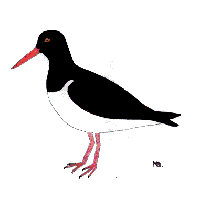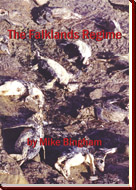 |
 |
| |
|
|
Pied Oystercatcher Local Name: Magellanic Oystercatcher Breeding Range: Falklands, Chile
& Argentina The Pied Oystercatcher is a very common bird along sandy, muddy and rocky shores throughout the Falklands. It is usually seen searching through estuarine deposits and rockpools for a wide range of marine invertebrates, such as worms, crabs, isopods and shell fish. Breeding begins with the preparation of a simple hollow in open ground above the high water line. Two eggs are laid around October, which hatch 3 to 4 weeks later. Chicks are kept under constant guard by the adults, who are very aggressive towards anything entering their territory. Far from trying to hide when approached, adults guarding eggs or young will scurry alongside approaching humans issuing a harsh piping call. Smaller animals, such as birds of prey, are often attacked by adults using their long pointed bill as a weapon. Sexes are similar. |
|
|
||||||||||||||||||||||||||||




